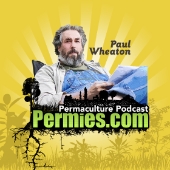
 2
2




 2
2




 2
2




The ultimate goal of farming is not the growing of crops, but the cultivation and perfection of human beings. - Masanobu Fukuoka
 1
1




 1
1








Emerson White wrote:
Does anyone know what chemical means they are supposed to use?
find religion! church
kiva! hyvä! iloinen! pikkumaatila
get stung! beehives
be hospitable! host-a-hive
be antisocial! facespace
 4
4




 2
2




I am glad to read that lavender works well with olives because it grows so easily here.... I will try your other suggestions. I have dug the holes already but am hesitating to plant. We are entering winter here and this could put them at risk if we get a bit of frost? What do you think?kasl wrote:
In my olive grove I have rosemary, lavender, thymus, oregano, artichoke, lemongrass beneath olives. They also love the company of almonds and figs.
 1
1




Chelle Lewis wrote:
I am glad to read that lavender works well with olives because it grows so easily here.... I will try your other suggestions. I have dug the holes already but am hesitating to plant. We are entering winter here and this could put them at risk if we get a bit of frost? What do you think?
I was told to add 1 kg bonemeal per tree. Is there any other planting advice when doing it permie style? How close can you grow these other plants.... right up against? I was told they need tons of sun. We have excellent sun here but they really seem to need lots? Not be shaded in any way....




 I looked up punica granatum... is pomegranate... to wonderful. I have 2 trees and I think I will try and get some going off of them to put there too.
I looked up punica granatum... is pomegranate... to wonderful. I have 2 trees and I think I will try and get some going off of them to put there too.Found here...... Excellent addition to the guild.......Ziziphus Jujuba is a fruit found in the hills and mountains of India. Its medicinal benefits are mentioned in Ayurveda and Chinese Medicine.This article tries to gain further insight on this herbal fruit.
Knowledge Gained from Research about Zizuphus Jujuba:
* The component ziziphin, found in this herb is a Triterpene Saponin Glycoside.
* Triterpene Saponin Glycosides (TSGs) are chemical compounds with healing properties.
* Betulinic acid is a component which protects the cells in the body from virus.
* It has anti- inflammatory and anti-malarial properties.
* It is recently discovered as a potential anticancer agent too.
* Japanese research has proved that this herb can improve liver functions.
Benefits of different parts of Ziziphus Jujuba:
The Leaves:
The leaves of this herb are astringent. It means that the leaves can narrow the blood vessels in the tissue and stop bleeding.They can reduce fever and prvent hair loss too.
The Seeds:
The seeds can induce sleep, reduce anxiety and prevent stomachache. Treatment of palpitations, nervous exhaustion and excessive perspiration is also possible using them. They prevent nausea and abdominal pain in pregnancy.
The Roots:
The root is dried and powdered. It is used in the treatment of fevers and dyspepsia. When the powder is applied on wounds and ulcers,they heal quickly.
The Fruits:
The dried fruits purify the blood and help in digestion. They are found beneficial in the treatment of hysteria, anemia, chronic fatigue, loss of appetite, diarrhea, and irritability.
The Barks:
The barks is made into a bitter decoction and taken to get relief from gingivitis. Paste made from the bark can be applied on sores. Juice prepared from the root bark is said to provide relief from rheumatism and gout.
 1
1




"the qualities of these bacteria, like the heat of the sun, electricity, or the qualities of metals, are part of the storehouse of knowledge of all men. They are manifestations of the laws of nature, free to all men and reserved exclusively to none." SCOTUS, Funk Bros. Seed Co. v. Kale Inoculant Co.









Emerson White wrote:
Being honest here, I've never heard of Olives suppressing growth chemically, Autumn Olives yes, but not real olives. Does anyone know what chemical means they are supposed to use?




 1
1





 3
3








Emerson White wrote:Being honest here, I've never heard of Olives suppressing growth chemically, Autumn Olives yes, but not real olives. Does anyone know what chemical means they are supposed to use?




Russell Hatfield wrote:Looking at the natural guilds that develope in the wild with the olive or its relations might give you reliable guidance.
In VA/NC there are some native members of the OLIVE Olea europaea L. of Oleaceae has Related Species: Wild Olive (Olea africana), Oleaster (O. europaea var. oleaster) and native relatives of Distant Affinity: American Olive (Osmanthus americana), Fragrant Olive (O. fragrans).
From what I recall of the flowers I think they are related to the native haw (not haw viburnam or hawthorn) and Autumn Olive / Russian Olive. Elaeagnus umbellata / Elaeagnus angustifolia (Oleaster Family).
—/:/:/——///:/—::://—-
Absolutely not. Not related even distantly.
Russian Olive/Autumn Olive/Eleagnus are all in the Rhamnus family -Rhamnaceae- the Buckthorn types. These are nitrogen fixing woody plants that have species all over the world adapted to many different climates and are great pioneer plants. Going farther back to order, these are in the Rosid group.
By contrast Olives are in the Olivaceae and include Jasmines, Privet (!), Forsythiae, etc. And going farther back are in the Mint/Aster grouping. They are not at all nitrogen fixing. And they are not pioneer plants.
These could not be farther apart as far as relatives.




 1
1




I'm doing it for the squirrels, dude.





|
I found a beautiful pie. And a tiny ad:
Homestead Pigs Course
https://permies.com/wiki/365748/Homestead-Pigs
|


